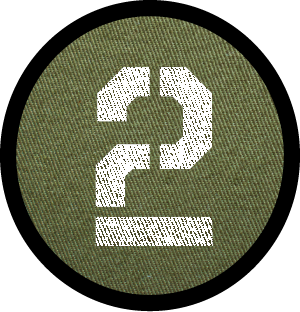
Following the end of World War One, the United States Army compiled a vast amount of information related to Black soldiers. This included everything from test scores when the soldiers were inducted into the military, reports on how Black units reacted to combat action as well as how effective Black officers were in leadership roles within Black units.
Many of these reports were written by white officers who were over the Black units and while some of these officers were generally objective in their reports, some were influenced by biases existing at the time.
As a result, when the U.S. Army War College released a report in 1925 studying the viability of using Black troops in a future war, the report reflected these biases. Reports from many Black units in World War One including the 92nd Division felt that Black troops were ill suited to combat, that Black officers were ineffective in leading Black units, and that Black soldiers should only serve in service oriented units under the command of white officers in order to be effective.
As a result, Black units in World war Two had to face the scrutiny of officers who read the 1925 Army War College, many of whom would be placed in commands over the 92nd Infantry Division. This would impact not only how the unit would be viewed during training but also once they saw combat as well.
Tras el final de la Primera Guerra Mundial, el ejército de los Estados Unidos recopiló una gran cantidad de información relacionada con los soldados negros. Esto incluyó todo, desde puntajes de pruebas cuando los soldados fueron incorporados al ejército, informes sobre cómo reaccionaron las unidades negras ante la acción de combate y cuán efectivos fueron los oficiales negros en roles de liderazgo dentro de las unidades negras.
Muchos de estos informes fueron escritos por oficiales blancos que estaban al mando de las unidades negras y, si bien algunos de estos oficiales fueron generalmente objetivos en sus informes, otros fueron influenciados por prejuicios existentes en ese momento.
Como resultado, cuando la Escuela de Guerra del Ejército de Estados Unidos publicó un informe en 1925 estudiando la viabilidad de utilizar tropas negras en una guerra futura, el informe reflejaba estos prejuicios. Los informes de muchas unidades negras en la Primera Guerra Mundial, incluida la 92.a División, consideraban que las tropas negras no estaban preparadas para el combate, que los oficiales negros eran ineficaces para liderar unidades negras y que los soldados negros solo debían servir en unidades orientadas al servicio bajo el mando de oficiales blancos para que fueran efectivos.
Como resultado, las unidades negras en la Segunda Guerra Mundial tuvieron que enfrentar el escrutinio de los oficiales que leyeron la Escuela de Guerra del Ejército de 1925, muchos de los cuales serían puestos al mando de la 92.ª División de Infantería. Esto afectaría no sólo cómo se vería la unidad durante el entrenamiento sino también una vez que entraran en combate.
Con la reactivación de la 92.ª División de Infantería en octubre de 1942, la división, junto con otras divisiones que existieron anteriormente durante la Primera Guerra Mundial, se reorganizaron según el estándar de división triangular, es decir, en lugar de tener cuatro regimientos de infantería dentro de la división, dos en acción y dos en reserva, la división tendría tres regimientos de infantería con dos en acción y uno en reserva. Como resultado, cada división perdió un regimiento de infantería. En el caso de la 92.ª División de Infantería, sólo conservó un regimiento de infantería de su servicio en la Primera Guerra Mundial, que fue el 365.º Regimiento de Infantería. Esto también convierte a la 92.a en la única división de combate negra que tiene un vínculo de regimiento con su contraparte de la Primera Guerra Mundial.
Tuesday–Saturday
10AM–4PM
Thursday
10AM–5PM
1PM – 5PM (Free Admission)
Sunday
Closed
Monday
Closed



